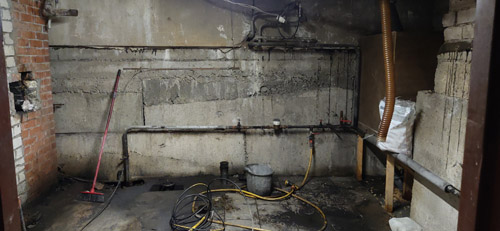
Basement waterproofing is an important step in preventing water seepage and flooding of the lower floors of a building. It requires specialized techniques to ensure that any moisture-related issues are addressed effectively. As part of this process, homeowners may be wondering if there are any DIY approaches they can take to protect their basement walls from water damage.
Water damage in basements is a serious issue that can require costly repairs, and it�s important to be aware of the warning signs. For example, one homeowner noticed bubbling paint on the walls and realized water was seeping through the foundation from his crawl space due to an unusually high local water table. Understanding how to identify these potentially hidden issues is key for homeowners looking to protect their property.
Waterproofing basement walls from the inside is a common practice in order to prevent mold growth and structural damage. This process involves applying waterproof coatings or membranes, sealing cracks with epoxy injections, and installing a perforated drain system.
Basement waterproofing is a crucial step in preserving the integrity of one's home. By understanding the most common causes of water damage and addressing them with effective solutions, homeowners can ensure that their basements remain dry for many years to come. Subsurface drainage systems are one of the best options when it comes to long-term basement waterproofing; they provide an effective barrier against water infiltration while allowing any existing moisture to escape through drain tiles or pipes. Surface-level techniques such as sealing cracks and applying coatings may also prove beneficial in preventing future water damage in certain cases. For those who prefer a do-it-yourself approach, there are several products available on the market which allow individuals to take control over their own basement waterproofing projects. With some research and due diligence, these strategies can be just as successful as professional methods if applied correctly. Ultimately, taking measures now to protect your basement from water damage will save you time and money down the road by avoiding costly repairs or replacements. Investing in quality waterproofing services is a wise decision which brings peace of mind knowing that your home is safe from unwanted moisture intrusion.
The basement of a home is often the most overlooked area when it comes to waterproofing. Unfortunately, this ignorance can lead to costly repairs down the line; think of water damage as an iceberg, with only one-tenth visible above the surface, and nine-tenths hidden beneath. For homeowners looking to protect their property from potential disasters, there are several steps they can take in order to waterproof their basements:
In addition to peace of mind, a dry basement provides additional living space if desired since there isn't any risk associated with moisture buildup in corners and crevices. Basement waterproofing experts know how to handle all types of basements including cracked foundations, leaking pipes and seepage problems so you don�t have to worry about these things yourself on top of everything else. Transitioning into cost considerations for basement waterproofing, understanding what services may be needed in order to properly address potential problems is key when considering the overall price tag.
In order to make informed decisions, homeowners must research local laws regarding basement waterproofing and know what type of work needs to be done on their property specifically. This will help determine the best contractor for the job based on qualifications, price range, safety standards, etc., without compromising quality results. After narrowing down the choices, customers should schedule an initial consultation with each candidate so that all necessary information can be discussed clearly and contracts can be finalized prior to beginning any project.
Basement waterproofing is like a shield of armor for protecting homes from the threats of water damage. When it comes to basement wall waterproofing, the materials used and the solution employed will determine how long it lasts. Various options are available that can be tailored to each home's unique needs.
Waterproofing Basement Walls From Inside
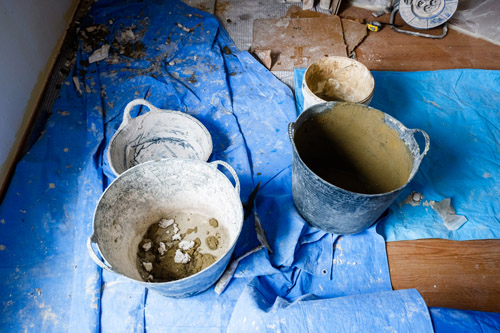
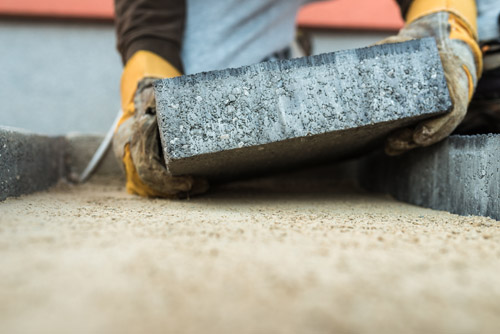
Frequently Asked Questions
No matter which option is chosen, proper installation is key when trying to maximize the longevity of any given waterproofing material on basement walls. Hiring an experienced professional who has knowledge about local building codes and soil conditions may help ensure successful implementation that stands up over time. Foundation repair methods should also be taken into account before selecting a particular type of waterproofing solution so that no issues arise down the line due to inadequate preparation or improper application techniques.
Basement Waterproofing
Another cost-effective way to waterproof basement walls is by using interior drain systems with sump pumps installed around the perimeter of the basement floor. These systems work by draining away all excess groundwater before it has a chance to enter your home. The sump pump then operates when necessary to collect the drained water and carry it away from your property safely into nearby storm drains or streams. While this type of system requires extra maintenance compared to exterior sealants, its ability to provide effective protection against high levels of ground water makes it well worth considering as part of your overall plan for waterproofing basements.
Once the inner surface has been treated with a protective layer, the next stage is to fill any existing cracks with epoxy injections. These can help strengthen weak spots on the wall's surface so they don't become more damaged by exposure to water pressure over time. Additionally, an exterior drainage system made up of perforated drains can be installed around the perimeter of the building foundation in order to redirect groundwater away from its walls.
The first step is typically sealing off any openings that lead into the crawlspace by using vapour barriers or airtight covers. This helps create a controlled environment so that humidity levels stay low while preventing water infiltration from outside sources such as rainwater or groundwater seepage. Furthermore, dehumidifiers can also be installed inside the space which helps maintain good ventilation and keep mould growth at bay.
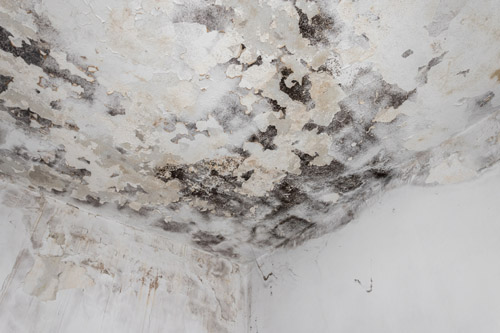
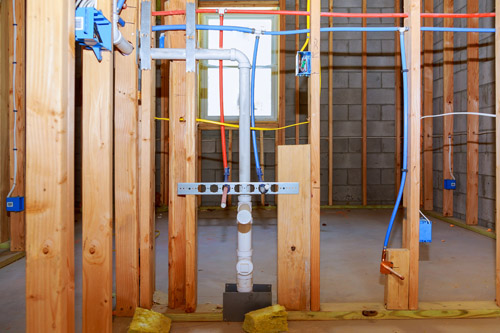
Subsurface drainage works similarly except it is located beneath the ground rather than above it. It typically consists of a perforated pipe surrounded by gravel or other porous material which catches any water that enters through the foundation wall and diverts it outside of the home�s perimeter. The key advantage with subsurface drainage is that it prevents groundwater buildup near the exterior walls since all of the collected liquid is diverted far away from them.
Lastly, when dealing with dampness in basements one should always look for solutions that involve repairing or replacing any cracked foundations walls or floors since these can cause long-term structural damage if left untreated. TIP: Make sure you contact a certified technician who specializes in moisture control before starting any repairs on your own!
Taking all these considerations into account, using an appropriate sealant product along with professional installation services may yield long-term benefits by providing better protection against moisture damage over time. Without the right kind of care and attention given during this job, costly repairs might result due to inadequate waterproofing measures being implemented. Therefore, taking proactive steps in this regard could save money while offering peace of mind regarding safety within the home environment.
In some cases, installing a sump pump can also be beneficial for basement waterproofing efforts. A sump pump works by collecting excess groundwater and pumping it away from your foundation and out of your yard so it doesn�t build up again and cause more damage later on. It should be noted though that these pumps require regular maintenance due to their mechanical components potentially wearing down over time since they are constantly running whenever ground levels reach certain heights near your foundation walls.
Basement waterproofing is a necessary home maintenance procedure for homeowners. It provides protection from potential flooding and other water-damage related problems, including the growth of mold or mildew. The most effective way to ensure that the basement walls are properly waterproofed is through applying a quality sealant product on both interior and exterior surfaces.
Cost Considerations For Basement Waterproofing
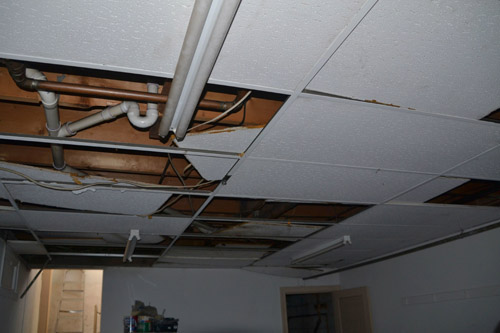
Home value is always increased by foundation repair. A bad foundation can reduce the overall value of your property by 10% to 20%. If your house is worth $350,000 but you only get $280,000, the difference is $70,000. The cost of repairing a foundation is around $24,000.
METHODS FOR REPAIRING CONCRETE FOUNDATIONS The two most popular techniques for this kind of repair are hydraulic jacking and slabjacking (also known as piering). Slabjacking is the most popular technique for repairing smaller concrete slabs that have sunk, such as home slabs, driveways, walkways, pool decks, etc.
How Can a Sinking Foundation Be Repaired? In order to fix a sinking foundation, piers must be put in. These are steel poles that are inserted into the ground close to your house and then braced against the foundation. Your foundation cannot move any lower because of the piers holding it in place.